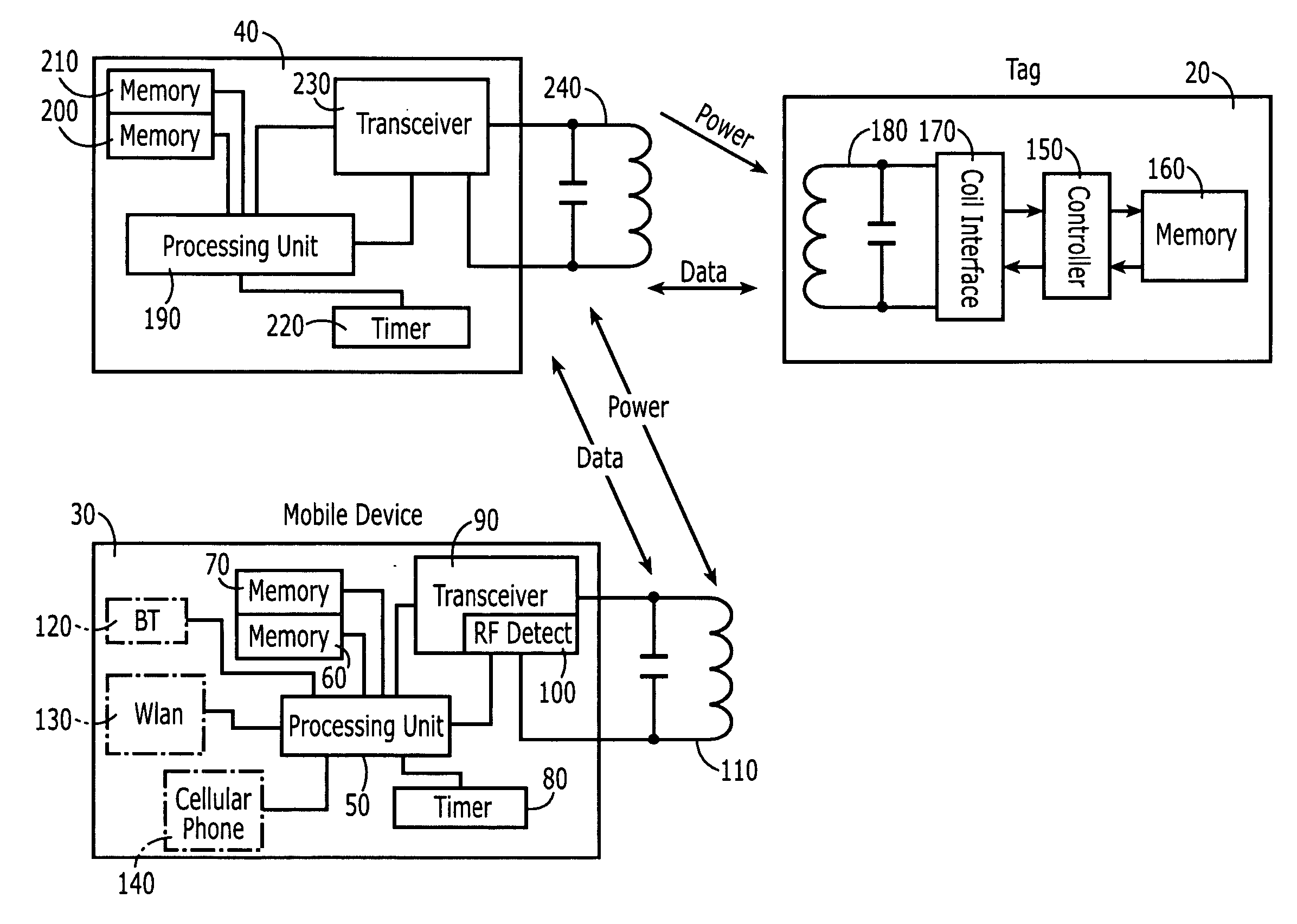Reducing power consumption of a short-range wireless communication reader associated with a mobile terminal
a short-range wireless communication and mobile terminal technology, applied in the direction of sustainable buildings, high-level techniques, instruments, etc., can solve the problems of increasing the power consumption of the reader, increasing the power consumption of the device, so as to reduce the power consumption and preserve the power of the mobile terminal
- Summary
- Abstract
- Description
- Claims
- Application Information
AI Technical Summary
Benefits of technology
Problems solved by technology
Method used
Image
Examples
first embodiment
[0043] The present invention provides methods, devices and computer program products for recognizing interference communication or data content that is not a type formatted for its capabilities. The present invention provides three embodiments for mitigating power consumption in the mobile terminal caused by interference communication or unsupported data type communications received by the reader / transceiver of the mobile terminal. According to the present invention, a user interface is providing for in the mobile terminal for activate / de-active the auto-detection circuit. Typically, mobile terminal readers / transceivers are configured such that they will be activated on a regularly scheduled basis, for example once every second, to “scan’ the environment for short-range communications present in the environment. With this option, if the device user is aware that the device is currently residing in an environment with interfering communication, the user may choose to de-active the au...
second embodiment
[0045] the present invention provides for automatically “locking off” all interrupts or chosen interrupts, such as the RF detection interrupt once the mobile terminal determines that communication is an interfering communication or has data content that is not formatted according to the reading capabilities of the device. The “lock-off” period may either be a fixed period of time or until loss of the interfering signal or the unsupported data format signal. In certain instances, having a “lock-off” period that is released by the loss or stoppage of the signal may not be practical. This is especially, evident in instances in which the short-range communication, such as a NFC communication, has breaks between the radio frequency carrier / exciter transmissions.
third embodiment
[0046] the present invention provides for an environment adaptive routine that provides for the activation of the signal detection circuitry to occur less frequently if a false trigger is detected and for the frequency of the activation of the signal detection circuitry to be further adjusted if the false trigger persists, if numerous false triggers occur during a signal detection period or if the false trigger no longer appears. A false trigger is defined as a radio frequency signal not carrying a correct data format capable of being interpreted by the associated device.
[0047]FIG. 6 provides for a flow diagram that describes the flow of a method for providing environment adaptive power conservation to a multifunctional mobile terminal / device having short-range communication capabilities. It should be noted that the method described in FIG. 6 is by way of example only and that other adaptive power conservation methods are also possible and within the inventive concepts herein disclo...
PUM
 Login to View More
Login to View More Abstract
Description
Claims
Application Information
 Login to View More
Login to View More - R&D
- Intellectual Property
- Life Sciences
- Materials
- Tech Scout
- Unparalleled Data Quality
- Higher Quality Content
- 60% Fewer Hallucinations
Browse by: Latest US Patents, China's latest patents, Technical Efficacy Thesaurus, Application Domain, Technology Topic, Popular Technical Reports.
© 2025 PatSnap. All rights reserved.Legal|Privacy policy|Modern Slavery Act Transparency Statement|Sitemap|About US| Contact US: help@patsnap.com



